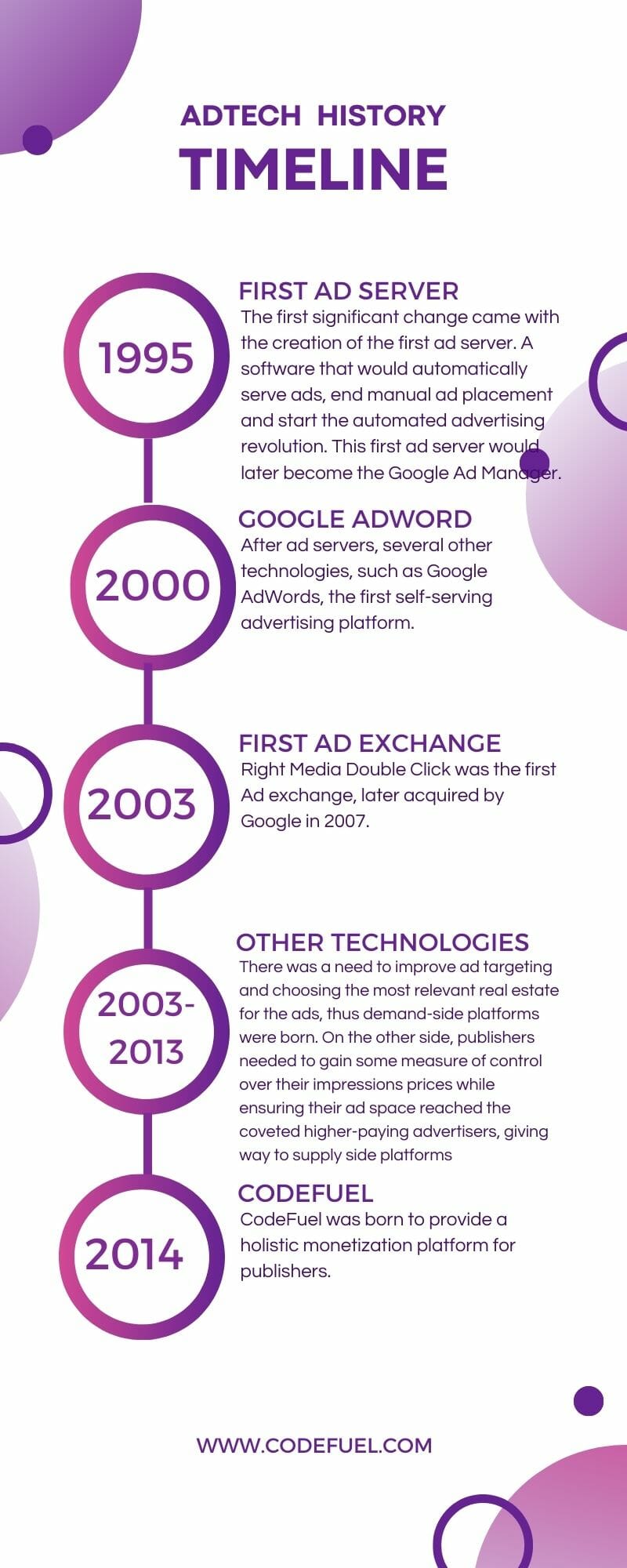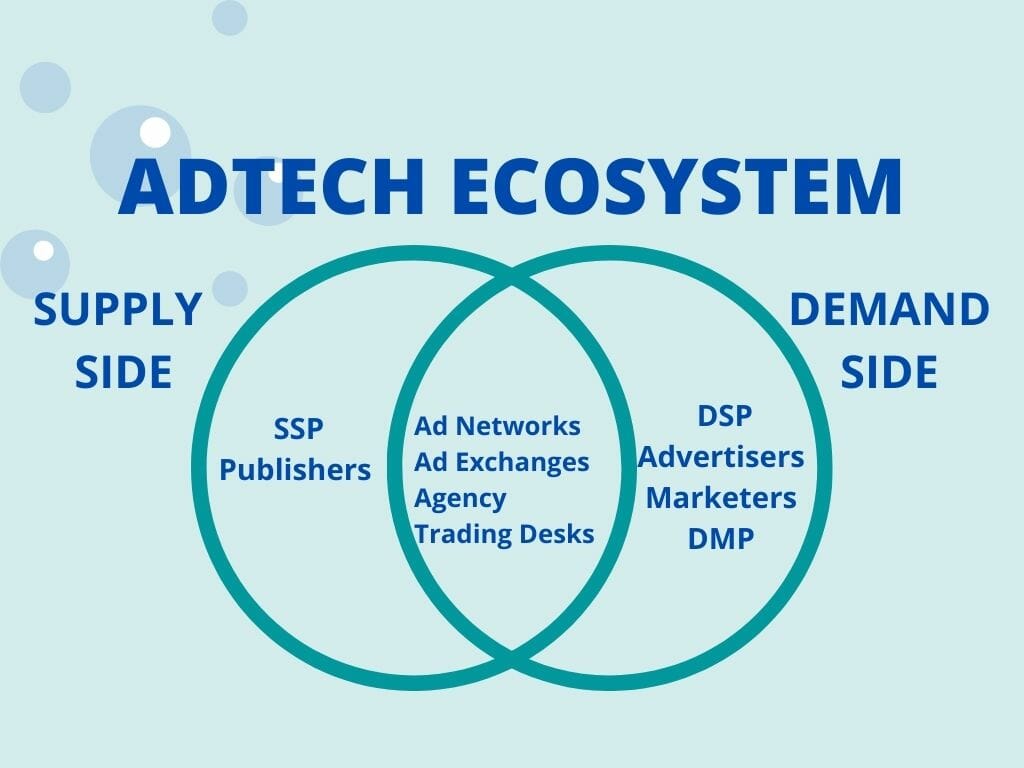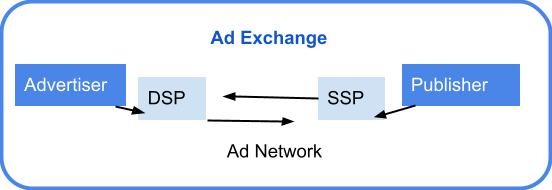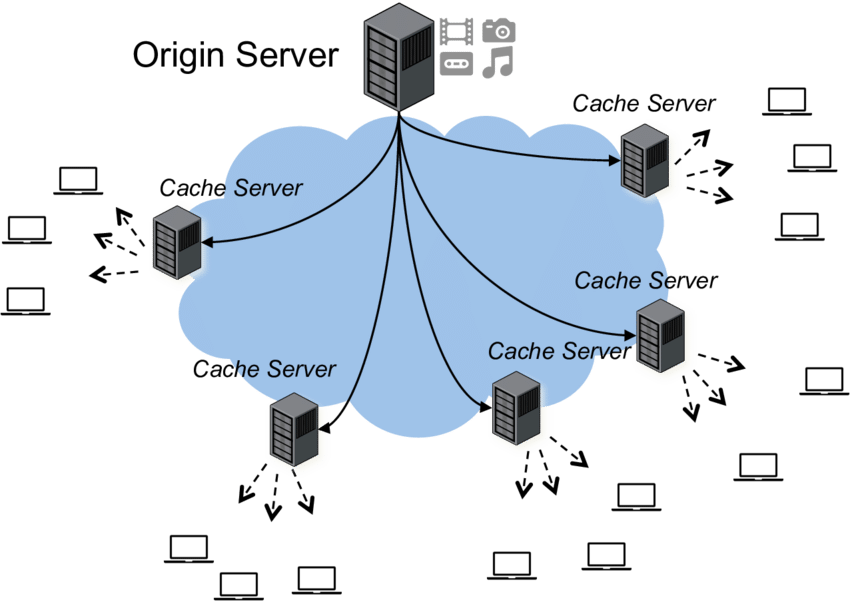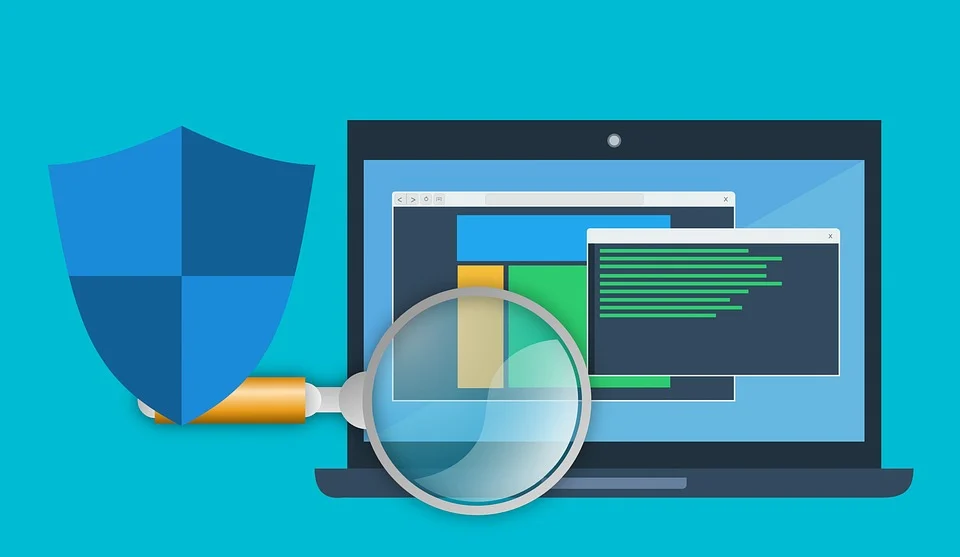The ad tech industry changed significantly from a decade ago. Long gone are the days of negotiating ad placements between publishers and advertisers.The biggest change happened at the peak of the digital advertising evolution, where giants like Google and Facebook gained the possibility of making billions in revenue today.
The other change resulted in publishers and developers being able to generate income from their digital properties. But what is ad tech, and how is it shaping media trading?
In this post
What is Ad Tech, and why do we need it?
Ad tech encompasses various technologies and tools for advertisers, agencies, publishers, and other industry marketers to plan and manage their digital advertising efforts and monetization strategies. Ad tech technology is used to optimize and automate digital advertising campaigns. It is an umbrella term that stands for advertising technology. This includes everything from ad networks and demand-side platforms (DSPs) to data management platforms (DMPs) and ad verification solutions.
Evolution of the Ad Tech Industry
Without adtech, programmatic advertising wouldn’t exist. Ad Tech enables the delivery of highly targeted ads, implementing omnichannel marketing strategies among other techniques.
Why Do You Need Ad Tech?
To understand why we need adtech let’s think about how advertising was done years before the ad tech industry was born.
Before the advent of ad tech, media buying, and advertising was a manual, complex process that required a lot of time and effort. Then, in the ’90s, e-commerce exploded, and both advertising and media agencies found themselves helping to select websites for their client’s ads.
This involved researching, checking metrics, and choosing which website would bring the maximum ROI for advertisers.
Adverts were published to reach as large an audience as possible without almost no personalization. While you can create brand awareness by striving for a massive reach. iThis type of general ad is less relevant for individual viewers.
Adtech was introduced to make it possible to deliver advertisements to the most relevant audiences, at the right time and in the right context, thus the programmatic ecosystem was born Marketers then save time, money, and effort. Publishers, on the other side, can monetize their digital assets while giving end-users the most relevant offer for their queries.
Here are some highlights of the process:
Ad Tech Ecosystem
Advertising technology analyzes, manages, and delivers advertisements according to the requirements of the advertiser and target audience. Campaigns look to maximize the effect of ads, ultimately increasing ad revenue.
How Does Ad Tech Work?
Ad tech works by leveraging data and technology to optimize and automate the digital advertising process. It works through a complex ecosystem of players, including advertisers, publishers, ad networks, DSPs, SSPs, DMPs, and more. Here’s a brief overview of how it works:
Who are the Key Players in Ad Tech?
The ad tech ecosystem consists of Advertisers, publishers, demand-side platforms, ad exchanges, ad networks, supply-side platforms and demand-side platforms.
In short:
1. Advertisers: Companies that want to advertise their products or services. They use a DSP to access multiple ad exchanges where they can bid on ad inventory in real-time
2. Publishers: Companies that own and operate websites, apps, or other digital properties where ads can be displayed. Publishers use supply-side platforms (SSPs) to manage and sell their ad space to advertisers.
3. Ad networks: Intermediaries between advertisers and publishers, offering access to multiple publishers’ inventory.
4. Demand-side platforms (DSPs): Platforms used by advertisers to access multiple ad exchanges and bid on ad inventory in real-time.
5. Supply-side platforms (SSPs): Platforms used by publishers to manage and sell their ad inventory to advertisers.
6. Data management platforms (DMPs): DMPs collect and analyze data to create audience segments that advertisers can target with their ads.
7. Ad verification solutions: These solutions ensure that ads are delivered in a brand-safe and fraud-free environment.
Elements of the Ad Technology Ecosystem
Publishers (The Supply side)
Publishers make their impressions and ad space available through supply-side platforms and ad networks at ad exchanges. Demand-side platforms bid on those ads through real-time bidding, selecting the most relevant ad types and placements for the target audience. Thanks to adtech, this supply-demand loop takes place in seconds, in the time that takes a page to load.
Advertisers (The Demand side)
Advertisers are one of the key players in the ad tech industry. They are companies that want to promote their products or services through digital advertising channels. Advertisers can range from small businesses to large corporations, and they often work with ad tech companies or ad agencies, or marketing firms to help them create and execute their digital advertising campaigns.
Image credit: Nagle
Ad network
Ad networks are programmatic advertising services that collect inventory from publishers into a platform where advertisers can bid for ad impressions. It simplifies the process of buying and selling ad inventory.
The networks gather the inventory of a large number of publishers based on a programmatic auction. Advertisers, on their side, can set campaigns directly through ad networks, choosing criteria for the campaigns, such as budget and target audience.
Want to learn more about Ad Networks? Check our What’s an Ad Network Glossary Page
Ad exchange
An ad exchange is a platform that connects advertisers and publishers, and helps them buy and sell ad space in real-time. It acts as a marketplace where publishers can sell their ad space and advertisers can bid on that space.
Publishers and advertisers don’t usually have access to the information shared in the ad exchange. However, in the ad exchange, publishers list the ad space they have available, along with details about the audience they reach and the price they are asking for ad spaces. Advertisers then bid on that ad space and the ad exchange matches the highest bidder with the ad space. The winning ad is displayed on the publisher’s website. This process happens in real-time, meaning that it can take place in just a few milliseconds.
Overall, ad exchanges make it easier for advertisers to reach their target audiences by giving them access to a wide range of publishers and ad inventory, while also helping publishers to monetize their content by selling their ad space more efficiently. Ad tech solution providers use ad exchanges to connect demand-side platforms (DSPs) with supply-side platforms (SSPs)
Content delivery network
A CDN is a network of servers deployed in multiple data centers at different locations around the world. The goal of a content delivery network is to serve content to end users with minimal latency and load times. CDNS are used in adtech to host ads so they are served to users from the closest server, minimizing the time to load the ads.
CDNs are used to load heavy web pages assets, like images and videos. The networks also cache content so web hosts can load assets faster.
Ad server
These were among the first ad tech developments used to host and store ads, then serve them on the publisher’s website. Nowadays, ad servers are full ad tech platforms for launching and managing ad campaigns and connecting publishers and advertisers.
Ad servers also collect data on ad performance to optimize campaigns. This technology is what makes it possible for media buying automation.
Programmatic Advertising
Programmatic advertising is an ad tech term that refers to the use of technology solutions to buy and sell digital ads. The platforms automate the purchasing process for digital ad inventory from publishers across the web. It also uses machine learning to serve targeted ads based on demographics, location, and behavior.
Targeted Advertising
Targeted advertising is a way of digital advertising that focuses on delivering ads according to the specific traits, interests, and intent of a consumer. For example, let’s say you are looking for coffee makers online on Amazon. Amazon tracks your activity with a cookie. Later, when you are reading an article on a web blog, programmatic advertising platforms read the cookie and serve you ads related to your Amazon visit, like coffee pods.
The advantage of targeted ads is that they show you ads about things you are already interested.
Agency Trading Desk (ATD)
Is a set of tools used by media agencies to plan, buy and manage advertising. Organizations that are not yet ready to install a DSP or justify an in-house team use ATD services. The downside of using an agency trading desk is that advertisers don’t have direct access to the inventory.
Demand-side Platform (DSP)
Is a platform that allows users to buy inventory from various ad exchanges and supply-side platforms (SSP). Unlike an ad server, with a DSP advertisers don’t need to negotiate prices with publishers. They set their CPM (Cost per Mille), target preferences, and can launch the campaign. A DSP also lets you set bidding rules, and optimization tools that help run your media buying without having to be on top of it.
Supply-side Platform (SSP)
Is the publisher’s side of a DSP. This ad software enables publishers to make available, manage, sell and optimize inventory on their websites and applications. SSP also works based on real-time bidding. That means you don’t need to negotiate rates with advertisers. You only need to embed an ad tag and or a header to the website, which will allow the browser to request an ad for that place in the website. The tag is forwarded to the SSP, which automatically selects a suitable ad from the DSP according to the publisher’s data.
Data Management Platform (DMP)
A data management platform enables advertisers to understand in-depth about their audience’s behavior. The DMP collects data from different sources, hashtags, mobile apps, cookies, APIs, etc. The platform uses third-party cookies to define the user profile and develop behavioral targeting in a DSP or ad server.
Customer Data Platform (CDP)
Customer Data Platforms go a bit further than DMP. Not only collects third-party data but also personally identifiable information (PII). Thus a CDP can create a complete profile with a name, company email and other data, gathered under consent, from analytics tools, Customer Relation Management tools, subscriptions, newsletter signups, transactional systems, etc. This technology will probably be very popular once third-party cookies are phased out by Google in 2022.
The role of user data
This loop of supply and demand generates revenue thanks to a key component: user data.
Understanding the user behavior and activity on a particular platform is the core of the effectiveness of programmatic advertising. User data is what makes it possible, via sophisticated software algorithms, to deliver the right ad to the right person at the right time.
You can buy user data or you can gather it on your own. But, the goal is to gather actual data from actual people (behaviors, interests, attitudes, and attributes) to be accurate in your targeting. The more you can refine ad targeting to the user, the better your bottom line will look. Why? Because the more the user relates to the ad, the more inclined they will be to click on it. That’s simple.
For publishers, the more your website, application, or extension marketing efforts apply to your target audience, the higher the value of your digital real estate for advertisers.
Inventory and Ad Quality Scanning Tools
These tools are critical to prevent ad fraud, which affects around 37% of ads. Inventory and ad quality scanning tools help prevent traffic bots, malvertising, and ad fraud by scanning the ads before being served on the website.
The Ad Tech Solutions of CodeFuel
CodeFuel is an adtech company dedicated to providing monetization solutions for publishers and app developers. Our solutions include:
Search Mediation
CodeFuel offers optimized landing pages that maximize revenue for publishers. Regardless of the platform you buy your media, our solution can help you increase your revenue. The monetization page is fully tailored for your business needs and the buying platform you use.
Media traders then can monetize search and achieve higher revenue by leveraging the mediation platform.
Website monetization
CodeFuel monetization solutions are designed to transform intent into revenue.
The user-intent based search enables you to monetize your website with contextual ads. By matching the audience’s intent to the right ad, you enhance the user experience and earn a higher revenue.
Search queries
Search queries give a customized search results page (SERP), hosted on your website, with paid text ads, optimized by search technology.
Shopping ads
When you sign up your website with CodeFuel, your users are served shopping fuel ads related to their intent. For example, when a user clicks on an ad for a new cell phone, the system directs them to a results page with relevant ads for this specific cellphone model.
News feed
You can also add a news feed to your website. Powered by MSN, it includes over a thousand premium news publishers. This increases your user’s engagement, by encouraging users to have a longer dwell time in your site. Ultimately, this translates into more conversions.
App Monetization
CodeFuel uses intent-based search to monetize your mobile app or browser extension. Add search capabilities to your application, which returns a customized SERP with relevant text and shopping ads.
Key features of CodeFuel solutions
- Simple integration: easy installation and integration with search engines and ad networks.
- HUB Analytics: get the information you need to improve your performance with the analytics hub.
- End to End Support: complete account management with strong business intelligence.
Advertising Technology for advertisers
Advertisers conform to the demand side of the advertising technology. Solutions geared for them aim to reach the target audience in the most efficient way and for the lowest possible price. These solutions help advertisers to run and optimize personalized programmatic campaigns, targeting and retargeting potential customers.
The advertiser’s ad tech stack may comprise some or all these types of tools:
- A remarketing/ retargeting tool
The fast pace of digital communications and the short attention span of customers means that sometimes a consumer will have interest in an ad but not follow through. Later, the consumer cannot find the ad or recall the name of the company (didn’t happen to us all?). Therefore, retargeting is essential for marketers to push consumers down the funnel.
- Prospecting tools
Expanding their customer base is a priority for most companies. Thus, machine-learning-powered prospecting tools help companies find their target audience in ad networks and ad exchanges. The more marketers use the tool, the more the system learns and refine the prospecting process.
- Data management platforms
As we mentioned above, leveraging user data is a basic concept of programmatic advertising. Gathering, processing, and analyzing consumer behavior and transactional information makes it possible for companies to pinpoint the ads to the users to the dot.
- Demand side platforms
This is the advertising technology that facilitates finding, bidding, and placing the ads at the right placement automatically. The system works automatically, serving the ads according to relevance for the end-user, the budget, and the criteria specified by the advertiser. Some of the top demand-side platforms are:
- Rocket Fuel
- Amazon
- AppNexus
Advertising Technology for publishers
Ad tech for publishers aims to achieve the highest price for the ad placement or impression from the most relevant buyers.
The right supply-side platform, like CodeFuel, can maximize the revenue of your digital property, whether is a website, an application, or an extension by delivering the most relevant ads to high intent users. It uses contextualization and intent-based advertising technology to ensure the right ad gets to the user most likely to click on it.
This enhances the user experience, increasing the value of the website or app for advertisers, thus ensuring higher bids.
Buying ad space with ad tech
Advertisers can automate their media buying with the help of ad tech solutions such as demand side platforms (DSPs) and ad networks. They can reach their target audience by buying the ad space on the sites they visit, and according to the user interests.
Marketers can set their criteria for buying ad space, in categories like location, target audience, and demographics. Programmatic advertising solutions also allow marketers to review and test the performance of the campaign, gathering information about impressions, conversions, and click-through rates, thus effectively optimizing their campaigns.
Demand-side platforms usually offer buyers different types of deals, including automated real-time bidding, private marketplaces or direct one-to-one deals. Learn more about demand-side platforms in our What’s a Demand-Side Platform? Guide.
Selling ad space with Adtech’
AdTech solutions are also beneficial for publishers and the supply side. Supply-side platforms collect unused inventory from publishers and offer it in a programmatic auction to the highest bidder. Publishers can then fill their inventory in real-time, and maximize their revenue. CodeFuel goes a step further from supply-side platforms offering complete monetization solutions for digital properties.
Learn more about supply-side platforms in our What’s a Supply-Side Platform (SSP)? Guide
How Ad Tech Simplifies Media Trading
Without the ad tech companies, programmatic advertising wouldn’t exist. By automating the media trading process it takes the negotiation out of the hands of publishers and buyers, simplifying the process. Ad tech enables advertisers to bid on the most relevant ad placements for their campaign without having to check site by site. Simply input the requirements and budget and the platform will find, bid, and acquire the best ad placements at the best possible price, then serving the ads immediately.
On the supply side, ad tech helps publishers to sell ad space without having to find and negotiate with advertisers. It also makes it possible to sell impressions and inventory in seconds. Thus, ad tech is taking the hassle out of media trading.
What are the benefits of AdTech?
AdTech revolutionized the way we sell and buy ad space. The solutions simplify and improve digital ad campaigns, with benefits for the supplier, the advertiser, and the user. Because most popular Ad Tech solutions use machine learning, the technology will continue to get better and optimize the campaigns.
It optimizes ad spending by helping advertisers and agencies deliver the right content, at the right time, to the right audiences. Ad tech also delivers operational efficiencies for campaigns: adtech allows marketers to plan and manage campaigns more efficiently.
The current trends in the Ad Tech Industry
Where is Ad Tech going in the next few years? The industry has grown by leaps and bounds over the last 20 years and is not willing to stop evolving. Here are the top trends that are shaping the ad tech industry:
1. Artificial Intelligence and Machine Learning
These two technologies help advertisers analyze massive amounts of user data, incorporating behavior analysis to predict the actions of a user online. This data is processed and correlated to serve the right ad according to the user intent at this moment.
2. Post cookies optimization
Google’s phasing out third-party cookies by 2022 is causing major upheaval in the programmatic industry. Some markets report significant drops in buyer’s bid rates as a consequence. In Germany, buyer’s bid rates decreased by 40%.
Companies are trying to find a viable user identity alternative that doesn’t affect them so much. Some alternatives may include storing data without using cookies by opt-in forms, universal ids, data pools, among others.
3. Programmatic everything
When Netflix and Amazon Prime changed the way we consume multimedia content from cable to digital, advertisers needed to transition with them. Now, programmatic advertising is making its way to television, audio, and podcasts to take advantage of the power of data for this segment of the market.
Ad Tech or MarTech?
While often confused, ad tech and mar-tech are two different industries. Is true, they intersect in some features and functions, but each one has a different approach. Putting it simply is the same difference between marketing and advertising.
Advertising implies using paid media and content for promoting products and services. Marketing is a more broad approach to promotion, and inside the marketing mix of activities is advertising.
Make the most of your media trading with CodeFuel
CodeFuel ML and AI capabilities facilitate media buying while improving the revenue for publishers. Getting the right monetization solution is critical for success. Leverage user intent in your digital property by using search, shopping and news to engage users and improve their experience, serving them ads matched precisely with their queries.



